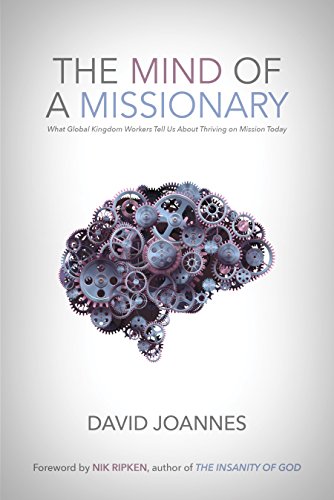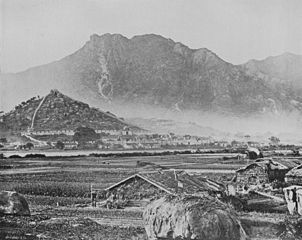The City of Darkness, an excerpt from The Mind of a Missionary

This chapter is an excerpt from David Joannes, The Mind of a Missionary: What Global Kingdom Workers Tell Us About Thriving on Mission Today (Within Reach Global, 2018).
Read the review by John Lathrop
The Kowloon Walled City in Hong Kong is one of history’s great anomalies. It was, in fact, a world unto its own.[i] Two governments claimed jurisdiction, but neither actively administered it; anarchy reigned while secret societies presided over the no-man’s land. High-rise apartments situated atop a labyrinth of dark, filthy corridors. A mere six acres sheltered the estimated 33,000 people who resided within the Walled City, swelling the population density to 3.25 million people per square mile.[ii] It was the most densely populated spot in the world. (In contrast, Manhattan has the highest population density of any city in the United States at 27,000 people per square mile.)[iii] Crazy-angled apartment blocks obstructed water pipes; without proper sanitation, excrement had to be emptied into the stinking alleys below. At street level, two toilets served all 33,000 residents. The “toilets” consisted of two overflowing cesspools—one for men and one for women. Damp, narrow alleyways with open drains harbored drug peddlers, addicts, pimps, and prostitutes. Triad gangs operated openly in the favored secret hideout; criminal activity ran rampant. Newcomers were immediately recognized and suspiciously monitored; few outsiders dared venture into the heart of the city of anarchy.
The history of the Walled City traced its roots back to the Song dynasty (960-1279) when the Chinese established an outpost to manage the salt trade. For hundreds of years afterward, little took place at the lonely fort, until 1842, when China ceded Hong Kong Island to Britain by the Treaty of Nanjing. As a result, the Qing Dynasty authorities felt it necessary to bolster the fort, check British influence, and maintain a stronghold opposite the harbor. In 1847, the construction of a formidable defensive wall finalized.

The Qing-era Kowloon Walled City, circa 1868.
Image: Wikimedia Common
The Convention for the Extension of Hong Kong Territory of 1898 leased additional portions of Hong Kong (the New Territories) to Britain for ninety-nine years.[iv] The lease excluded the Walled City, which at the time had a population of roughly seven-hundred people. The British government allowed Chinese officials to continue there, given they did not interfere with the defense of British Hong Kong. The Qing dynasty ended its rule in 1912, leaving the Walled City to the British.
In 1945, at the end of the Second World War, refugees fled mainland China, seeking protection in the Chinese territory surrounded by British land. By 1947, two-thousand squatters occupied the Walled City. After a failed attempt to drive them out in 1948, the British adopted a “hands-off” policy in most matters concerning the Walled City. The city was left to its own devices, and to develop, as Governor Sir Alexander Grantham described it, into “a cesspool of iniquity, with heroin divans, brothels, and everything unsavoury.”[v] The Kowloon Walled City began its transformation into the squalid enclave of vice for which it later became notorious.
Category: Ministry, Winter 2019


